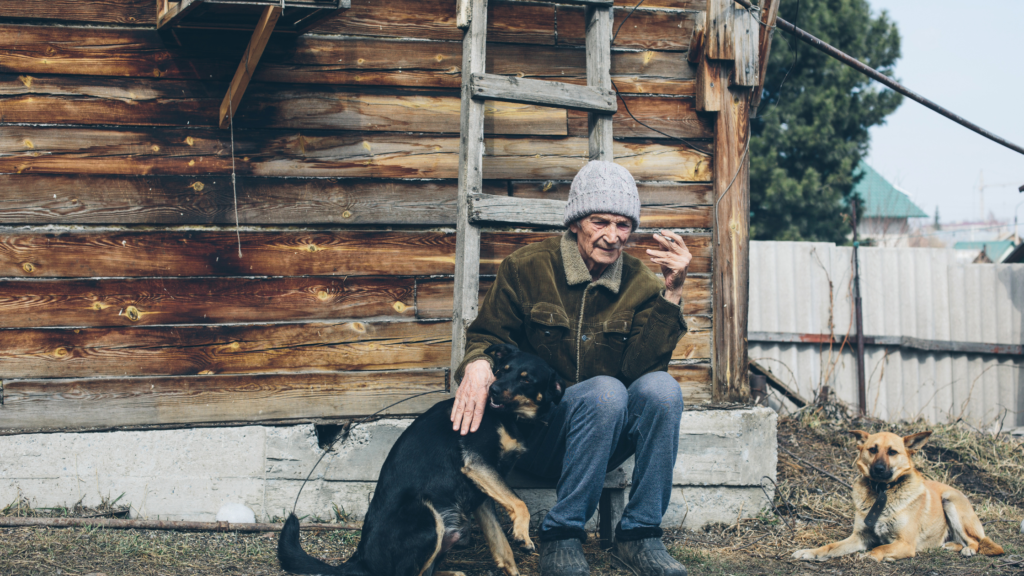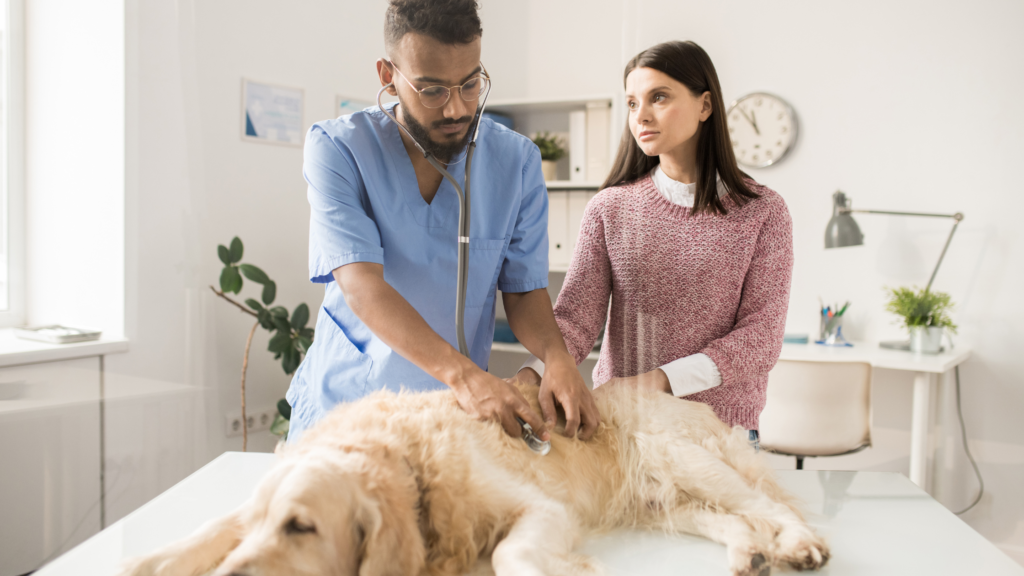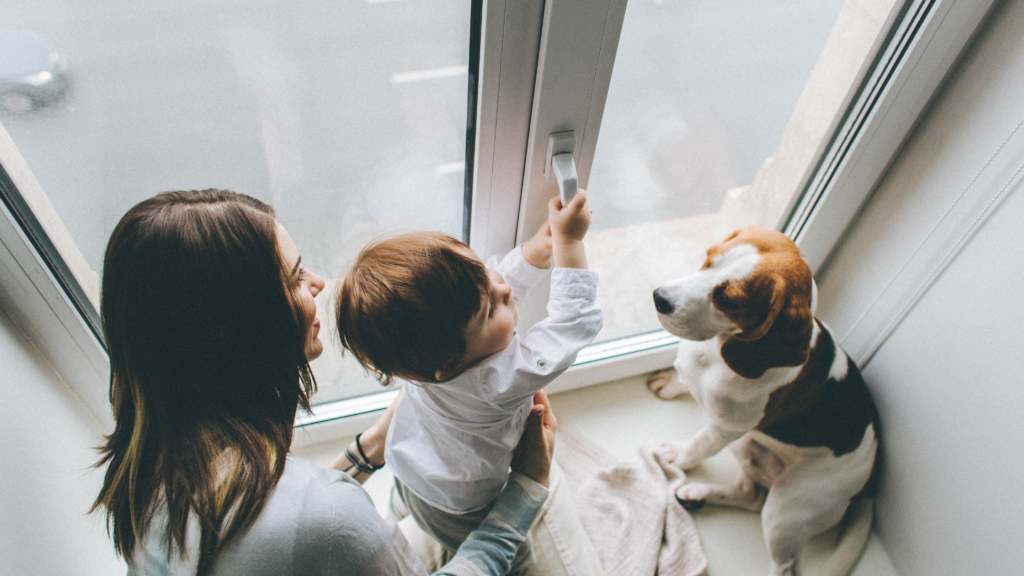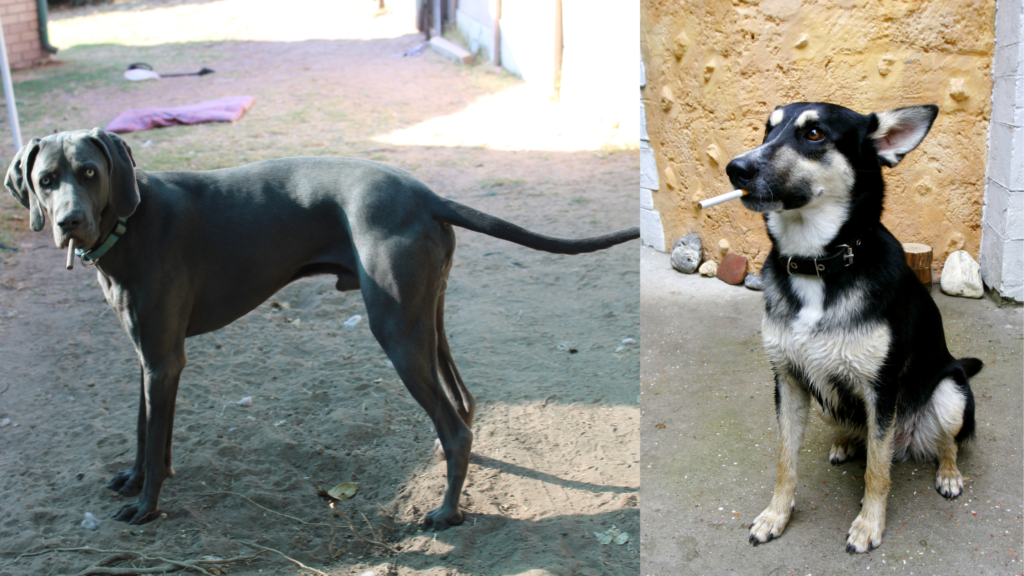Dogs are not immune to the harmful effects of secondhand smoke, and their well-being can be seriously compromised when exposed to this toxic smoke.
In this comprehensive article, we will delve into the impact of secondhand smoke on dogs and shed light on the symptoms of secondhand smoke poisoning.
Additionally, we will address a common concern among dog owners: Can blowing smoke in a dog’s face kill them?
Our furry friends rely on us to provide a safe and healthy environment, and understanding the risks associated with secondhand smoke is crucial for their overall health.
So, let’s explore the dangers of secondhand smoke exposure for our beloved canine companions and learn how we can protect them from this hazardous threat.
What is secondhand smoke?
Secondhand smoke is exhaled by a smoker and released from the burning end of a tobacco product such as a cigarette, cigar, or pipe.
It contains thousands of harmful chemicals, including nicotine, tar, carbon monoxide, and various carcinogens.
Is secondhand smoke harmful to dogs?
Yes, secondhand smoke is harmful to dogs. Dogs are susceptible to the same health problems caused by secondhand smoke as humans.
The chemicals present in smoke can negatively impact a dog’s respiratory system, cardiovascular health, and overall well-being.
What harmful chemicals are present in secondhand smoke that can affect dogs?
When it comes to secondhand smoke, it’s not just the smoke that threatens our furry friends.
There are numerous harmful chemicals present in secondhand smoke that can have a detrimental impact on dogs’ health.
Let’s take a closer look at some of these chemicals and their potential effects:
1. Nicotine
Nicotine is a highly toxic substance found in tobacco smoke.
When dogs inhale secondhand smoke containing nicotine, it can affect their nervous system, leading to increased heart rate, elevated blood pressure, and even seizures.
2. Carbon Monoxide
Carbon monoxide is a colorless and odorless gas produced by burning tobacco.
When dogs breathe in secondhand smoke containing carbon monoxide, it binds to their red blood cells, reducing their oxygen-carrying capacity.
This can result in oxygen deprivation and cause issues like difficulty breathing, weakness, and even organ damage.
3. Formaldehyde
Formaldehyde is a known carcinogen and irritant found in secondhand smoke.
Dogs exposed to this chemical may experience respiratory problems, eye irritation, and allergic reactions.
4. Benzene
Benzene is another toxic compound found in secondhand smoke.
Prolonged exposure to benzene can damage dogs’ bone marrow, leading to decreased red and white blood cell counts and compromising their immune system.
5. Ammonia
Ammonia is a respiratory irritant commonly found in cigarette smoke.
Dogs exposed to secondhand smoke containing ammonia may develop coughing, wheezing, and respiratory infections.
How does secondhand smoke affect dogs?

Just like humans, dogs can be negatively affected by secondhand smoke.
When exposed to secondhand smoke, dogs can inhale the toxic chemicals and particles.
These substances can irritate their respiratory system, cause inflammation in their airways, and enter their bloodstream, leading to various health problems.
Exposure to secondhand smoke can increase a dog’s risk of developing various health conditions, including respiratory issues such as bronchitis, asthma, and pneumonia.
It can also contribute to developing lung cancer and other types of dog cancer. Secondhand smoke can weaken a dog’s immune system, making them more susceptible to infections and illnesses.
It’s important to note that the effects of secondhand smoke on dogs can vary depending on factors such as the duration and intensity of exposure and the individual dog’s overall health.
However, even minimal exposure to secondhand smoke can harm a dog’s well-being.
To protect our furry companions’ health, keeping them in a smoke-free environment is crucial.
Avoid smoking around dogs, both indoors and outdoors, and make sure to provide them with fresh air and clean living space.
By doing so, we can help safeguard their respiratory health and promote their overall quality of life.
What are the health problems that secondhand smoke can cause in dogs?

Here are some health problems that secondhand smoke can cause in dogs:
1. Respiratory issues: Dogs exposed to secondhand smoke can develop respiratory problems such as coughing, wheezing, bronchitis, and asthma.
They may experience difficulty breathing and have an increased risk of developing lung infections.
2. Lung cancer: Secondhand smoke has been linked to an increased risk of lung cancer in dogs, just like in humans.
Dogs exposed to smoke are more likely to develop lung or respiratory tumors.
3. Allergies and skin problems: The chemicals in smoke can trigger allergies in dogs, leading to skin irritations, itching, and hot spots.
They may develop dermatitis or other skin conditions due to the irritants present in the smoke.
4. Eye and nasal issues: Dogs exposed to secondhand smoke may experience red, watery eyes, nasal discharge, and irritation.
They may also develop sinus problems and chronic inflammation in their nasal passages.
5. Cardiovascular problems: Secondhand smoke can affect a dog’s cardiovascular health, increasing the risk of heart disease, high blood pressure, and decreased lung function.
6. Increased cancer risk: In addition to lung cancer, dogs exposed to secondhand smoke have a higher risk of developing other types of cancer, including nasal cancer, oral cancer, and bladder cancer.
It’s crucial to prioritize dogs’ health by providing them with a smoke-free environment.
Avoiding exposure to secondhand smoke is essential for their well-being. It can help prevent the development of these severe health problems.
What are the symptoms of secondhand smoke poisoning in dogs?
Symptoms of secondhand smoke poisoning in dogs can vary depending on the extent of their exposure and their sensitivity.
Here are some common signs to watch out for:
1. Respiratory issues: Dogs may experience coughing, wheezing, difficulty breathing, or an increased respiratory rate. They may also exhibit labored breathing or show signs of congestion.
2. Eye and nose irritation: Dogs exposed to secondhand smoke may develop red, watery eyes, nasal discharge, or sneezing.
3. Allergic reactions: Some dogs may be allergic to the chemicals in secondhand smoke, leading to itching, skin rashes, or hives.
4. Gastrointestinal problems: Dogs may experience nausea, vomiting, diarrhea, or a loss of appetite.
5. Behavioral changes: Secondhand smoke exposure can cause dogs to become restless, anxious, or exhibit signs of stress.
It’s important to note that these symptoms can also indicate other health conditions, so it’s essential to consult a veterinarian for a proper diagnosis.
Also Read : German Shepherd Golden Retriever Mix : Best Guide 2023
Can blowing smoke in a dog’s face kill them?
As for whether blowing smoke in a dog’s face can kill them, it’s unlikely to cause immediate death.
However, it can have severe health consequences, especially with repeated exposure.
Blowing smoke directly into a dog’s face exposes them to a concentrated dose of harmful chemicals, leading to respiratory distress, lung damage, and long-term health problems.
It is best to avoid exposing dogs to smoke altogether to protect their well-being.
How can you protect your dog from secondhand smoke?

1. Smoke-free home
Establishing a smoke-free environment is the best way to protect your dog from secondhand smoke.
Avoid smoking indoors and ensure your home remains a clean and healthy space for your furry friend.
2. Designated smoking area
If you or someone in your household smokes, create a designated outdoor smoking area away from your dog.
This helps minimize their exposure to the harmful effects of secondhand smoke.
3. Ventilation
Ensure proper ventilation in your home to reduce the accumulation of smoke particles.
Open windows or use air purifiers to help improve air quality.
4. Educate others
If guests or visitors smoke, kindly request that they refrain from smoking near your dog or in your home.
Educate them about the potential risks and the importance of a smoke-free environment.
5. Consider quitting
Quitting smoking altogether is beneficial for your health and your dog’s well-being.
It eliminates the risk of exposing your dog to secondhand smoke entirely.
What should you do if you think your dog has been exposed to secondhand smoke?
1. Monitor for symptoms
Keep a close eye on your dog for any signs of respiratory distress, coughing, wheezing, or other unusual symptoms.
Watch for changes in their behavior or any allergic reactions.
2. Consult a veterinarian
If you suspect your dog has been exposed to secondhand smoke or is displaying symptoms related to smoke inhalation, seek veterinary advice.
A professional can assess their condition, provide appropriate treatment, and offer further guidance.
3. Provide a smoke-free environment.
Remove your dog from the source of the smoke and ensure they have access to fresh air.
Please keep them in a well-ventilated area away from smoke until they receive proper medical attention.
Is it illegal to blow smoke in a dog’s face?
While it may not be explicitly illegal to blow smoke in a dog’s face in all jurisdictions, it is considered highly irresponsible and cruel.
It goes against the principles of responsible pet ownership and can cause significant harm to the dog’s health.
Blowing smoke in a dog’s face can lead to respiratory issues, lung damage, and other health problems.
Treating animals with care, respect, and kindness is essential, and exposing them to harmful substances like smoke is strongly discouraged.
Also Read : Rottweiler Pitbull Mix – A Unique and Powerful Crossbreed
Ethical Considerations: Say No to Smoking Dog Memes – Smoker dog

While providing information about the dangers of secondhand smoke for dogs is essential, addressing a concerning trend that has emerged in recent years is equally crucial.
There have been instances where people have taken photos or created memes of dogs appearing to smoke.
It is essential to highlight that this behavior is wrong and immoral. Here’s why:
- Health Risk: Depicting a dog smoking, even as a joke or meme, can normalize harmful behavior and create the misconception that smoking is acceptable or entertaining. This can have serious consequences, as it downplays the actual health risks associated with smoking for dogs and humans.
- Animal Welfare: Dogs cannot give consent to participate in such activities. Creating images or videos of dogs smoking can subject them to unnecessary stress, discomfort, or even harm. As pet owners and advocates, we are responsible for prioritizing their well-being and treating them with kindness and respect.
- Misleading Information: Memes and viral images can spread quickly and significantly influence public perception. Creating or sharing smoking dog memes perpetuates misinformation and undermines the serious nature of the topic – the health risks associated with secondhand smoke.
- Promoting Responsible Pet Ownership: Encouraging responsible pet ownership means ensuring our beloved companions’ physical and emotional well-being. It involves providing them with a safe environment, proper nutrition, regular veterinary care, and protecting them from harmful substances, including smoke.
In conclusion, it is essential to recognize that creating or sharing smoking dog memes is wrong and immoral and goes against the principles of responsible pet ownership.
Let’s foster a culture of compassion and respect for our furry friends, spreading awareness about the dangers of secondhand smoke in a responsible and informative manner.
Together, we can promote the well-being and happiness of our beloved canine companions.
Conclusion
Secondhand smoke poses a severe dog risk, leading to various health problems.
To protect your furry friend, creating a smoke-free environment in your home is crucial and avoiding exposing them to secondhand smoke.
Establishing a smoke-free zone, educating others, and improving ventilation can significantly reduce your dog’s exposure to harmful smoke particles.
Suppose you suspect your dog has been exposed to secondhand smoke or is exhibiting symptoms of smoke inhalation.
In that case, it is vital to consult a veterinarian promptly.
They can provide proper medical care, diagnose potential issues, and offer guidance on ensuring your dog’s well-being.
Remember, prioritizing your dog’s health and creating a safe, smoke-free environment is essential to being a responsible pet owner.
